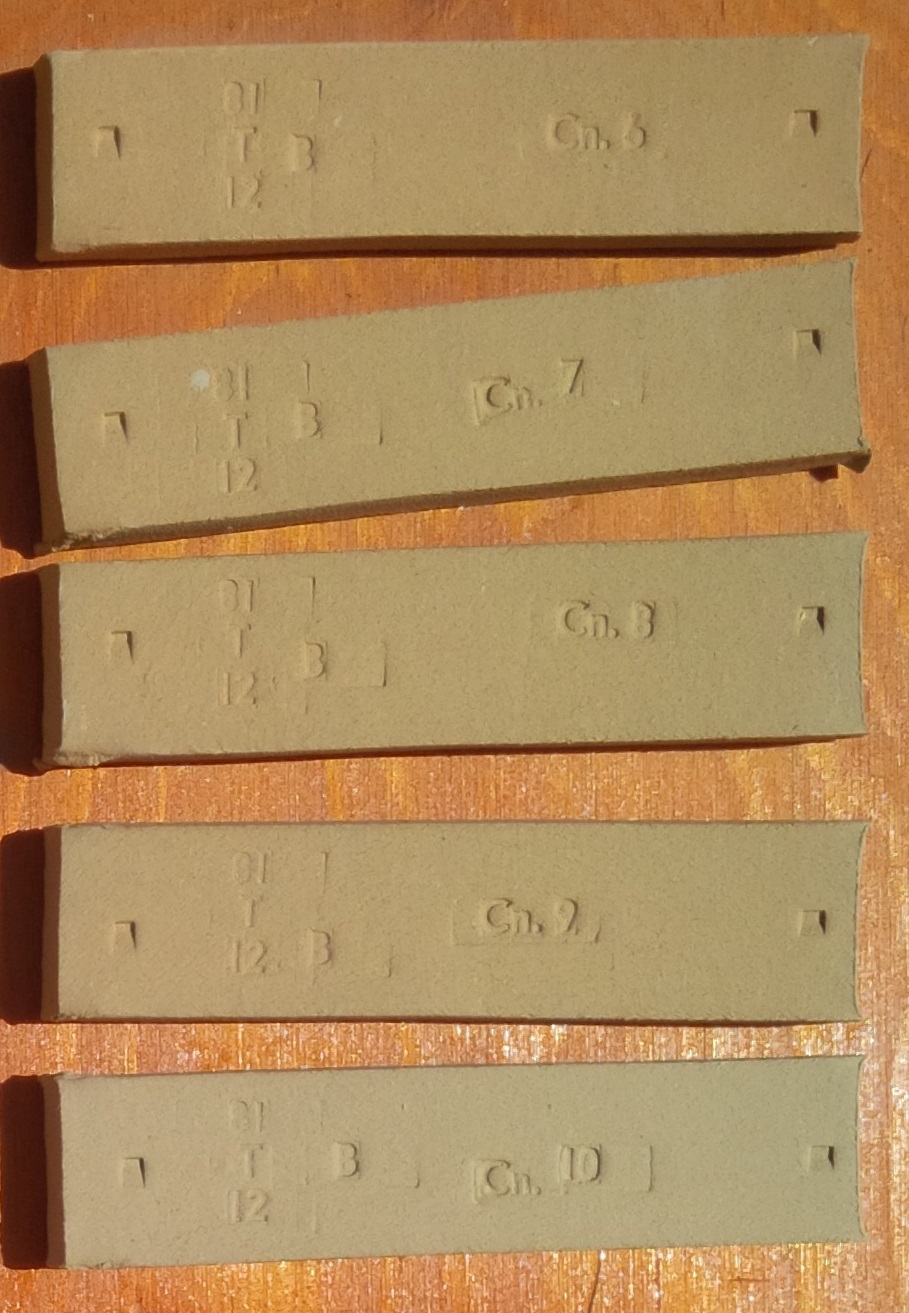Notes
'Fireclay' is a generic term that in the simplest terms refers to a refractory clay (one which can be fired to a high temperature without deforming or melting). Typically fireclays are plastic and have significant iron impurities. Light duty fireclays have a PCE of about 27 and super duty materials can melt as as high as cone 32.
The obvious use for fireclays is to make bricks and shapes for the structural elements in kilns and furnaces. These clay can be mixed with other materials to introduce air space in increase the insulating value of the product.
Fireclays are useful in many types of ceramics including brick, certain types of tile and sculpture and pottery clays. They impart plasticity and particle size distribution to the body and counter the early melting of any low temperature clays in the mix. For vitreous fireclay based bodies, considerable feldspar content is necessary.
Hundreds of different kinds of fireclays are available. However they are not normally interchangeable in body recipes since they vary drastically in plasticity, particle size, fired color, thermal expansion, and mineralogy.
Related Information
A fireclay that is not really a fireclay!

This picture has its own page with more detail, click here to see it.
This is a Lincoln 60 fireclay drying disk (that has been fired to cone 10R). It has near zero-porosity and is dense and very strong. It is like a stoneware clay, quite vitreous.
Skatgit Fireclay test bars

This picture has its own page with more detail, click here to see it.
Fired from cone 8-11 and 10 reduction (bottom to top). A refractory material.
Pine Lake fireclay lab test bars

This picture has its own page with more detail, click here to see it.
Fired to cone 10R (top) and 7,8,9,10 oxidation (from bottom to top). A refractory material.
Different runs of Plainsman Red Fireclay

This picture has its own page with more detail, click here to see it.
These are Fire-Red, a red refractory low plasticity clay mined in Manitoba, Canada. Red fireclay are not common. The top bar on each set is fired to cone 10R, the iron imparts deep color but the matrix is still fairly pours. The next one down in each set is fired to cone 10 oxidation. The third one down is cone 8, the red color is holding (it shifts to brown between around cone 9).
PBX Fireclay fired test bars

This picture has its own page with more detail, click here to see it.
Cone 10 reduction (top), cone 10 down to 6 oxidation below that (top to bottom). A refractory material.
Jordan Fireclay fired test bars

This picture has its own page with more detail, click here to see it.
Cone 6 to 10 oxidation (top to bottom) fired shrinkage and porosity testing bars.
What does Hawthorne Firelclay look like when fired?

This picture has its own page with more detail, click here to see it.
This is a Hawthorne Fireclay sample from 1997, these test bars are made to measure fired shrinkage and porosity. Top bar: Cone 10R. Proceeding down from there is cone 11, 10, 8, etc (oxidation). Drying shrinkage is 4.5%. Firing shrinkage is about 8% at cone 11 going down to 7% at cone 6, it is thus very stable across a wide range. Porosity is likewise, 3% at cone 11 slowly rising to 5% by cone 6. So this material is already fairly vitreous by cone 6 yet still stable at cone 11.
Reduction and oxidation color difference in a cone 10 red fireclay

This picture has its own page with more detail, click here to see it.
Plainsman FireRed fireclay fired to cone 10R. This shows the effect of reduction where the body is exposed to the kiln atmosphere (very dark burning) and where it is not (inner foot ring).
How can we tell if a clay is really a fireclay without doing a PCE?

This picture has its own page with more detail, click here to see it.
While a PCE test is certainly desirable, few people or companies have the ability to do this test. But the more accessable SHAB test produces physical testing data that is perhaps even better. The last column of numbers (titled "ABS", for absorption) prove that the clay on the right, my code number L4380, is very refractory. Even at cone 10R it has 11.3% absorption, and its firing shrinkage is only 3.9%. How do I know cone 10 11.3% porosity is impressive for a fireclay? Because I have tested many other fireclays using this same procedure. What about the clay on the left, L4378? In comparison, its cone 10R porosity of 6.4%, making it quite a bit more vitreous. But not enough to qualify it as a stoneware (which would have 1-2% absorption and 6-7% firing shrinkage). Additionally, many common fireclays also exhibit same level of maturity as L4378. So is it a fireclay or a stoneware? A 10% feldspar addition would convert it to stoneware, so there is merit in calling it a "stoneware material". But that is "in comparison to" the very refractory L4380. But, if we were compare L4378 to any of the false fireclays commonly sold, then it could certainly be termed a fireclay.
Links


















